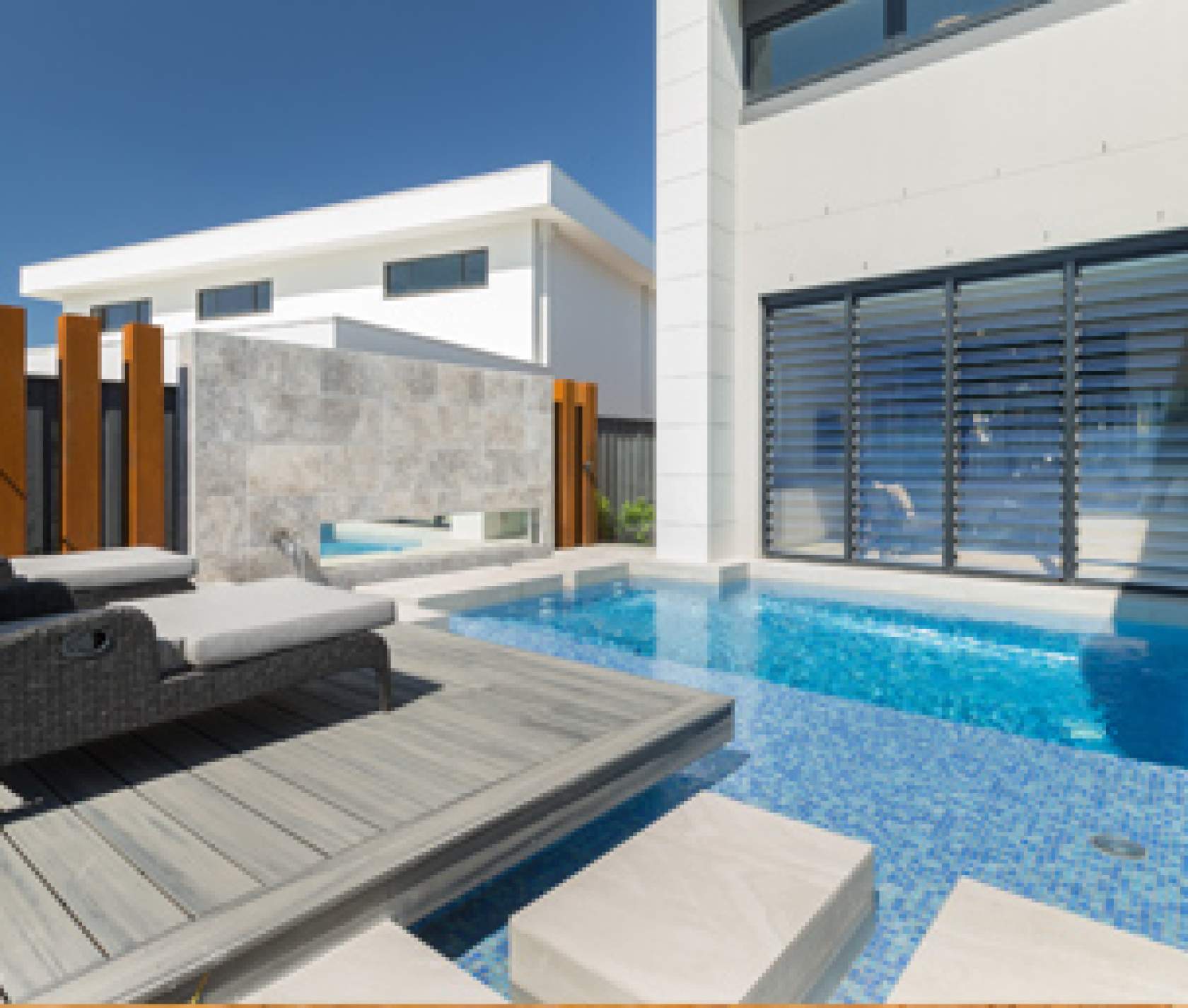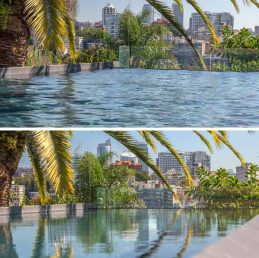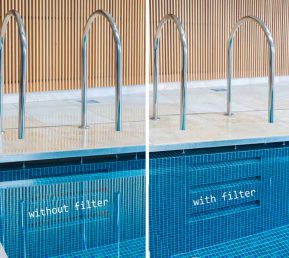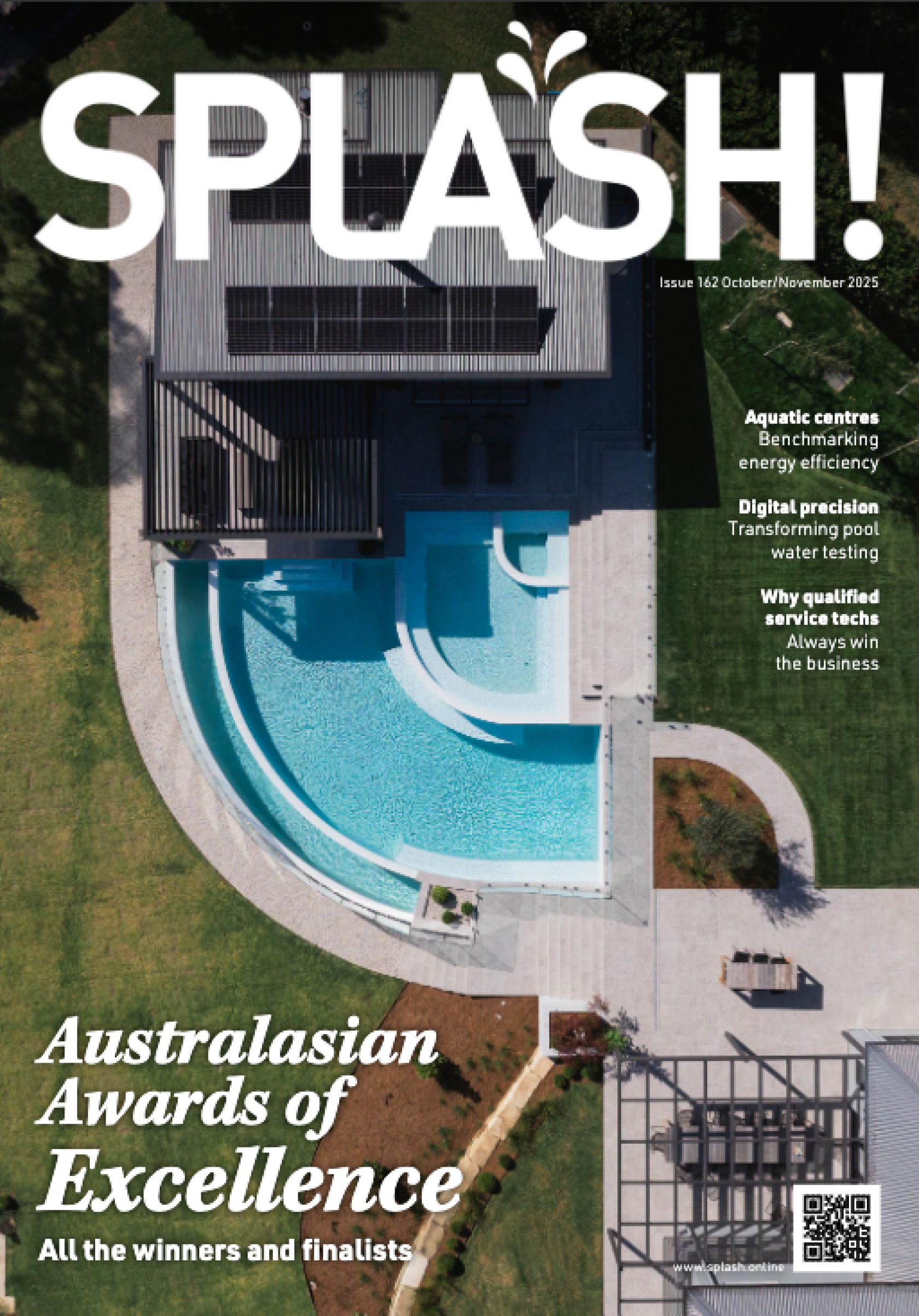Top 10 tips for photographing swimming pools (part two)


Matt Kemp is a professional photographer and photography trainer on Sydney’s northern beaches. Here he offers part two of his highly useful tips to help you take better swimming pool photos.
6. Learn to see light
Try shooting at different times of day and also on cloudy days. Cloudy days will be more “forgiving” when trying to obtain even lighting but the results can be quite dull. Modern cameras are getting better at shooting in harsh daylight so don’t be afraid to shoot when the sun is out. That is when the pool is most appealing so why not capture it? Taking photos on dusk is a stunning way to capture pool lights: the best photos will be when the ambient dusk light is as bright as the pool lights.
7. Use a tripod
Without going into a lesson about the exposure triangle, we should always to use a low ISO setting so that we have the cleanest, smoothest and highest-quality render. Low ISO settings produce better quality images but it also means we will often use shutter speeds that are too slow to safely handhold without causing camera-shake blur. A tripod sorts out these issues and this will pay dividends later, particularly if there are any post-production (software) adjustments to be made, as you will be working from the highest quality starting point.
8. Use a polarising filter
Shooting pool details such as tiles can be tricky because the reflections on the water tend to wash out the detail. A polarising filter can be used to strip back the reflection and reveal the tile detail beneath the surface. This filter will also reveal rich colours in vegetation, pool and sky. Try shooting with and without the filter.

9. Make it sparkle
Reflections are an appealing design element in a pool photo but when the sun is shining, try stirring up the pool using the pole of a leaf catcher. (Do this AFTER you are done with the other photos.) This effect allows you to capture some nice atmospheric, sparkling water photos that scream: “Come on, jump in!”
10. Shoot RAW for flexibility
Record your images in the RAW file format (if your camera supports it), which gives you quite a lot of creative flexibility after the photo has been taken. Then you can use software to make tonal and colour adjustments on a calibrated monitor. But be aware that RAW files are much larger than JPGs.
Go to Top 10 tips for photographing swimming pools (part one) to see tips 1 to 5.
Good photography can be very frustrating and it takes a lot of skill and knowledge to work with varying light. If you are serious about taking your own photos it will pay dividends if you invest time in learning how to properly control your camera for creative results. If you want to save time and frustration, then you might consider hiring a professional photographer. Matt Kemp provides both of these services.
Contact: 0404 956 624; www.mattkemp.com
Instagram: mattkempphotography




